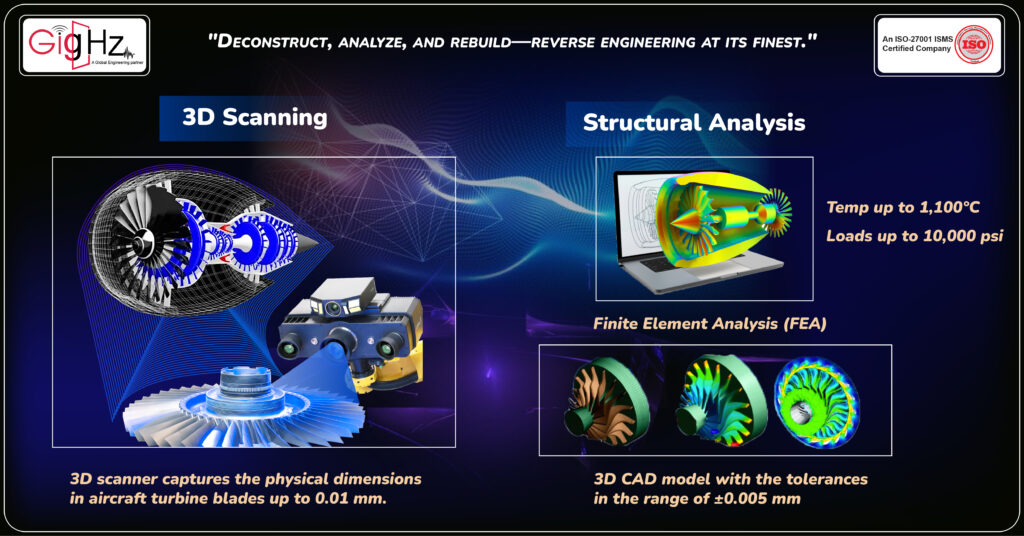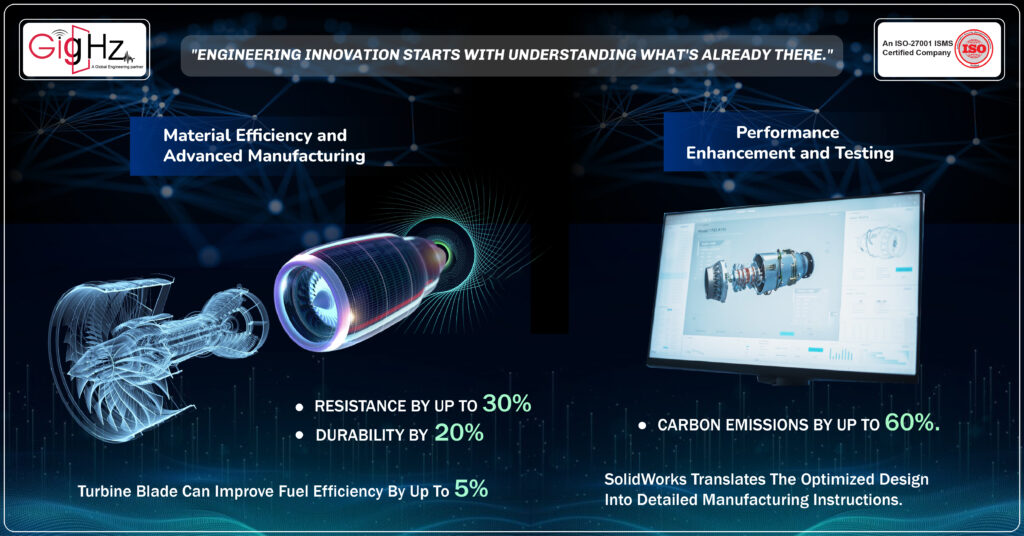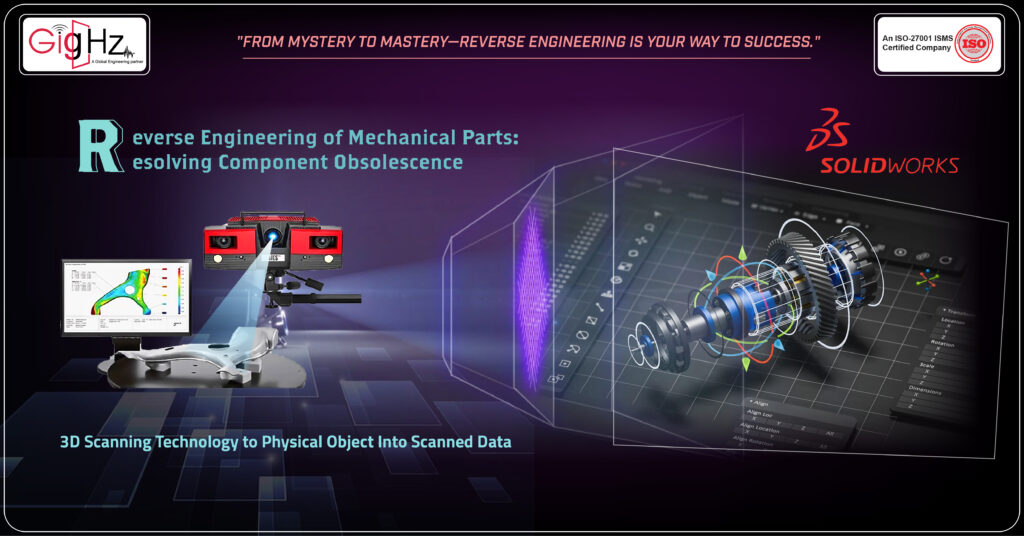How MCAD Reverse Engineering Lowers the Carbon footprint?
- Posted On:
- September 19, 2024
- Category:
- Mcad

MCAD Reverse Engineering
As we all become more aware of our environmental impact, there’s a growing push to reduce carbon footprints across the board.
As global temperatures rise and environmental concerns mount, individuals, businesses, and governments are all taking action to reduce their carbon emissions and minimize their environmental impact.
This effort isn’t just about adopting flashy new technologies but also about making smarter, more efficient use of what we already have.
That’s where MCAD reverse engineering comes into play.
By analyzing and refining existing products, we can make them more efficient, cutting down on unnecessary resource use and waste.
Reverse engineering helps us understand which materials are overused or inefficient, allowing us to select better, more sustainable options
We can redesign products to consume less energy, which means lower emissions and a smaller carbon footprint.
Improving the design of existing products means they last longer, reducing the need for replacements and the waste that comes with them.
In the quest for sustainability, the aerospace industry faces significant challenges. Obsolete aircraft engine parts, like those found in older models, contribute to waste and inefficiency.
As technology advances, certain aircraft engine parts, such as turbine blades in the Pratt & Whitney JT8D engine, become obsolete
Employing MCAD reverse engineering to refurbish these obsolete parts not only extends their lifespan but also significantly reduces the carbon footprint associated with new component production.
By extending the life of valuable parts through advanced reverse engineering techniques, we can significantly cut down on the need for new manufacturing, which in turn reduces waste and lowers overall carbon emissions.
Lets dig in!
Reverse Engineering of Mechanical Parts: Resolving Component Obsolescence

Reverse engineering is a process that allows engineers to resolve component obsolescence by capturing the geometry of existing parts. Utilizing 3D scanning technology, such as laser scanners, designers can digitize a physical object into scanned data, generating a point cloud that represents its complex surfaces.
The 3D scan enables the creation of a CAD model in software like SolidWorks or NX, where the measurement of features, including diameter and curve, can be accurately captured. This real-time process allows manufacturers to import the data directly into their design workflow, significantly reducing time and effort in the product design phase.
Once the 3D CAD model is created, engineers can edit and customize it to meet specific design intent, generating a prototype that reflects the original part’s functionality. The reverse engineering process also enables the conversion of polygonal data into feature-based or parametric models, facilitating further modifications.
By utilizing this cutting-edge technology, the designer can transform outdated components into modern equivalents, ensuring that automotive and electronic products continue to perform reliably.
How MCAD Reverse Engineering Lowers the Carbon footprint?

As technology advances, aircraft components like turbine blades in the Pratt & Whitney JT8D engine become obsolete.
MCAD reverse engineering, particularly with tools like SolidWorks, offers a sophisticated method for updating these parts.
This process not only extends their useful life but also significantly reduces their carbon footprint.
Here’s how this works in detail,
High-Resolution 3D Scanning
The 3D scanner captures the physical dimensions and surface characteristics of the existing turbine blade up to 0.01 mm. The scanner uses lasers or optical sensors to create a point cloud, a dense collection of data points with a density of 2-5 million points per scan that precisely represent the part’s geometry.
The point cloud is converted into a mesh, a digital representation of the part’s surface. This mesh is then refined to create a detailed digital model that can be imported into SolidWorks.
The accuracy of 3D scanning minimizes the need for iterative prototyping and adjustments, reducing material waste and energy consumption associated with traditional manufacturing methods.
CAD Modeling and Structural Analysis
In SolidWorks, the scanned data is used to create a 3D CAD model with the tolerances in the range of ±0.005 mm. This model includes detailed geometric features and material properties. SolidWorks provides tools for detailed modeling, including complex geometries and intricate details of the turbine blade.
Using SolidWorks Simulation, perform Finite Element Analysis (FEA) to handle loads up to 10,000 psi and temperatures up to 1,100°C for turbine blades under operational conditions. This involves creating a mesh of the CAD model and applying physical forces and thermal conditions to predict performance and detect potential issues.
By analyzing and optimizing the CAD model, engineers can enhance the performance and durability of the component. This reduces the frequency of replacements and repairs, leading to lower overall emissions associated with production and disposal of new parts.
Material Efficiency and Advanced Manufacturing

Use up to 50% less material compared to producing new parts. This is achieved through precise CAD modeling that minimizes excess material.
High-performance alloys or ceramic composites can improve thermal resistance by up to 30% and durability by 20% compared to older materials. SolidWorks translates the optimized design into detailed manufacturing instructions.
CNC machining and additive manufacturing achieve cutting path tolerances of ±0.005 mm, ensuring high precision in part replication or modification.
The precise modeling and material selection process reduce excess material usage, lowering the carbon footprint associated with raw material extraction and processing. Advanced materials also often require less energy to produce and can offer better performance, reducing the need for frequent replacements.
Performance Enhancement and Testing
Next, to refine the component’s design for improved efficiency, such as aerodynamics or thermal efficiency. Rigorous performance testing, including spin tests and thermal simulations, ensures that the updated parts meet or exceed the original specifications.
Optimized components often result in better operational efficiency. For instance, a redesigned turbine blade can improve fuel efficiency by up to 5%, which translates to lower fuel consumption and reduced emissions during operation.
Implementation and Lifecycle Management
Implementing the updated design locally reduces the need for transporting components over long distances.
Local refurbishment cuts down on transportation-related carbon emissions by up to 60%. Effective lifecycle management also ensures that components are used efficiently and maintained properly, reducing the environmental impact of frequent replacements.
Final Thoughts
By applying high-resolution 3D scanning, precise CAD modeling, material efficiency, and advanced manufacturing techniques, MCAD reverse engineering significantly lowers the carbon footprint associated with refurbishing obsolete aircraft engine parts.
The technical values, such as scanning resolution, material efficiency, and performance improvements, underscore how this process contributes to a more sustainable aerospace industry by reducing waste, optimizing resource use, and minimizing environmental impact.
To get the expert insights, Book a call. Schedule a Free consultation now. https://calendly.com/gighz/30min
Table of Contents
Latest Post
Get Customized Engineering CAD Design Service


Book a Free Consultation Call
Partner with Gighz and bring your most innovative design concepts to life. Our engineering cad services accelerate development so you can focus on your big vision.


